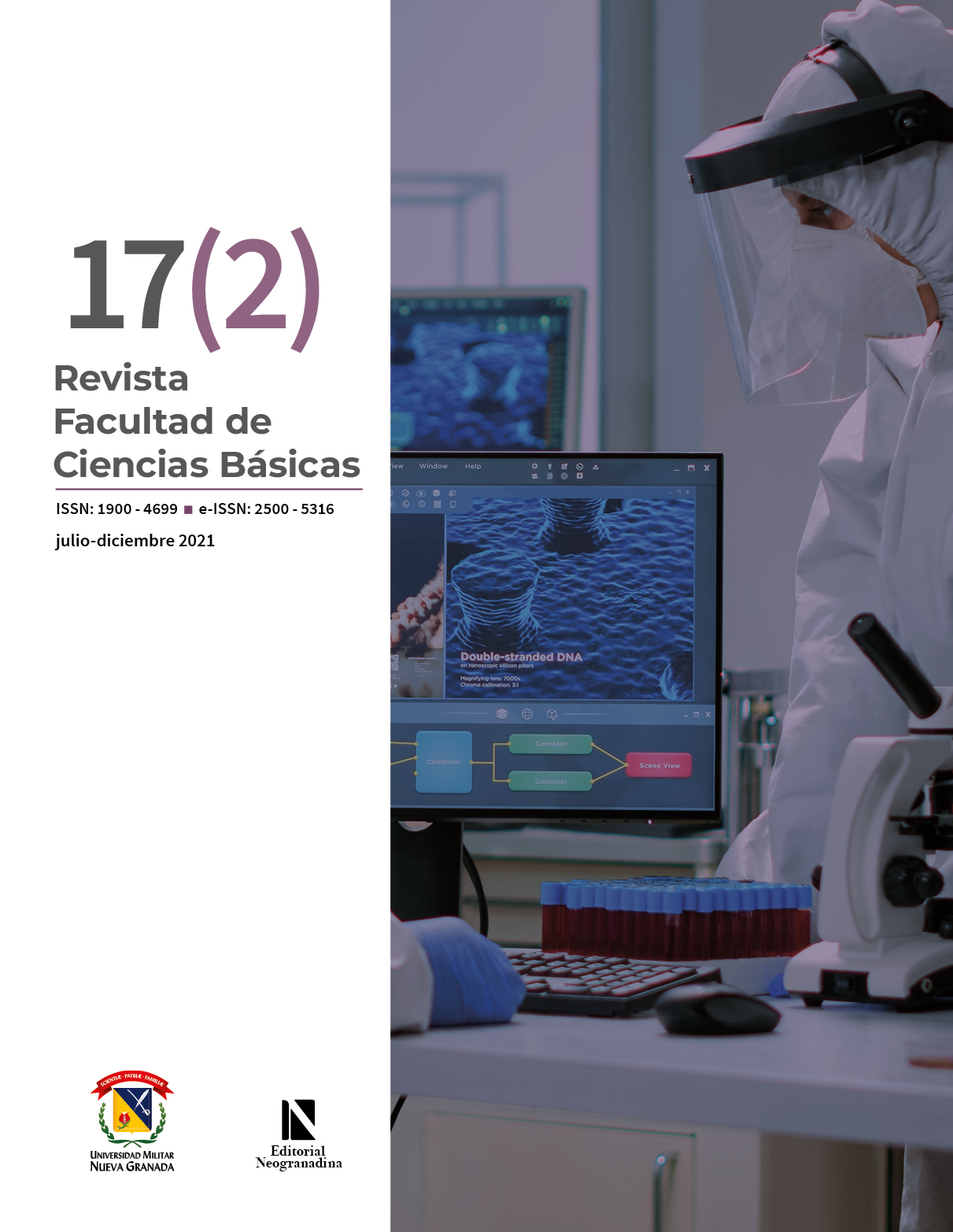Atividade Microbiana em Potencial do Peptídeo btm-p1 em Alimentos
Resumo
Um dos desafios da indústria alimentícia é a preservação dos alimentos. Para isso, desenvolveram-se técnicas que prolongam a integridade de seus nutrientes e as propriedades sensoriais pelo maior tempo possível. Entre os principais problemas está a contaminação bacteriana, que foi tratada com antibióticos sintéticos, mas que pode deixar resíduos tóxicos para o consumo humano.
Além disso, existe a preocupação com doenças causadas pelas bactérias que desenvolvem resistência microbiana pelo uso prolongado de antibióticos. Por esse motivo, alternativas naturais, como a nisina, tem sido utilizadas com sucesso há várias décadas, apesar de algumas limitações que poderiam ser superadas com investigações e testes com novos peptídeos antimicrobianos. O peptídeo
btm-p1 é uma molécula policatiônica, derivada da protoxina natural Cry11Bb1 do Bacillus thuringiensis subespécie Medellín, que demonstrou a capacidade de destruir bactérias; isso o converte em um conservante de alimentos em potencial. O propósito deste trabalho foi avaliar a atividade microbiana do peptídeo btm-p1 com bactérias típicas dos alimentos, tais como Escherichia coli, Salmonella sp. e Listeria monocytogenes. Tal atividade foi estudada com cultivos em diferentes condições físico-químicas,
com o fim de simular distintos ambientes do peptídeo nos alimentos. Mostrou-se que a Listeria monocytogenes foi a bactéria com melhor recuperação depois de sua incubação com o peptídeo em diferentes temperaturas e que o pré-armazenamento de btm-p1 em ambientes ácidos aumentou sua atividade microbiana contra Escherichia coli. Conclui-se que o peptídeo btm-p1 mantém sua atividade
antimicrobiana em meios de incubação com pH de 3 a 7 e temperaturas de 4 a 37 °C.
Downloads
Referências
M.M. Aung y Y.S. Chang, “Traceability in a food supply chain: Safety and quality perspectives”, Food Control, vol. 39, pp. 172-184, 2014, doi: 10.1016/j.foodcont. 2013.11.007.
G. El-Saber Batiha, D.E Hussein, A.M. Algammal, T.T. George, P. Jeandet, A.E. Al-Snafi, A. Tiwari, J.P. Pagnossa, C.M. Lima, N.D. Thorat, M. Zahoor, M. El-Esawi, A. Dey, S. Alghamdi, H.F. Hetta y N.Cruz-Martins, “Application of natural antimicrobials in food preservation: recent views”, Food Control, vol. 126, pp. 1080-66, 2021, doi: 10.1016/j.foodcont.2021.108066.
D.G. Newell, M. Koopmans, L. Verhoef, E. Duizer, A. Aidara-Kane, H. Sprong, M. Opsteegh, M. Langelaar, J. Threfall, F. Scheutz, J. van der Giessen y H. Kruse, “Food-borne diseases - the challenges of 20 years ago still persist while new ones continue to emerge”, Int. J. Food. Microbiol., vol. 139, pp. S3-S15, 2010, doi: 10.1016/j.ijfoodmicro.2010.01.021.
I.A. Rather, W.Y. Koh, W.K. Paek y J. Lim, “The sources of chemical contaminants in food and their health implications”, Front. harmacol., vol. 8, pp. 830, 2017, doi: 10.3389/fphar.2017.00830.
D.M. Tack, L. Ray, P.M. Griffin, P.R. Cieslak, J. Dunn, T. Rissman, R. Jervis, S. Lathrop, A. Muse, M. Duwell, K. Smith, M. Tobin-D’Angelo, D.J. Vugia, J. Zablotsky, B.J. Wolpert, R. Tauxe y D.C. Payne, “Preliminary incidence and trends of infections with pathogens transmitted commonly through food - foodborne diseases active surveillance network, 10 U.S. Sites, 2016-2019”, mmwr Morb. Mortal. Wkly. Rep., vol. 69, no. 17, pp. 509-514, 2020, doi: 10.15585/mmwr.mm6917a1.
D.C. Love, E.M. Nussbaumer, J. Harding, J.A. Gephart, J.L. Anderson, F. Asche, J.S. Stoll, A.L.Thorne-Lyman y M.W. Bloem, “Risks shift along seafood supply chains” Glob. Food Sec., vol. 28, pp. 1004-76, 2021, doi: 10.1016/j.gfs.2020.100476.
A. J. St. Angelo J. Vercellotti, T. Jacks y M. Legendre, “Lipid oxidation in foods”, Crit. Rev. Food Sci. Nutr., vol. 36, no. 3, pp. 175-224, 1996, doi: 10.1080/10408399609527723.
R. Franco, G. Navarro y E. Martínez-Pinilla, “Antioxidants versus food antioxidant additives and food preservatives”, Antioxidants (Basel), vol. 8, no. 11, pp. 542, 2019, doi: 10.3390/antiox8110542.
C.N. Cutter, “Microbial control by packaging: a review”, Crit. Rev. Food Sci. Nutr., vol. 42, no. 2, pp. 151-161, 2002, doi:10.1080/10408690290825493.
L. Gram, L. Ravn, M. Rasch, J.B. Bruhn, A.B. Christensen y M. Givskov, “Food spoilage--interactions between food spoilage bacteria”. Int. J. Food. Microbiol.,vol. 78, no. 1-2, pp. 79-97, 2002, doi: 10.1016/s0168-1605(02)00233-7.
D. Dave y A.E. Ghaly, “Meat spoilage mechanisms and preservation techniques: a critical review”, Am. J. Agric. Biol. Sci., vol. 6, no. 4, pp. 486-510, 2011, doi:10.3844/ajabssp.2011.486.510.
B. Ramos, F.A. Miller, T.R.S. Brandão, P. Teixeira y C.L.M. Silva, “Fresh fruits and vegetables - an overview on applied methodologies to improve its quality and safety”, Innov. Food. Sci. Emerg. Technol., vol. 20, pp. 1-15, 2013, doi: 10.1016/j.ifset.2013.07.002.
N. Upadhyay, A. Goyal, A. Kumar, D. Lal Ghai y R. Singh, “Preservation of milk and milk products for analytical purposes”, Food Rev. Int., vol. 30, no. 3, pp. 203-224, 2014, doi: 10.1080/87559129.2014.913292.
M. Zarei, N. Basiri, A. Jamnejad y M.H. Eskandari, “Prevalence of Escherichia coli O157:H7, Listeria monocytogenes and Salmonella spp. in beef, buffalo and lamb using multiplex pcr”, Jundishapur J. Microbiol., vol. 6, no. 8, pp. e7244, 2013, doi: 10.5812/jjm.7244
R.E. Patiño-Burbano, A.K. Carrascal, J. L. Parra-Arango, J. L. Rodríguez-Bautista y J. C. Salcedo-Reyes, “Assessment of a multiplex detection method for Salmonella enterica, Escherichia coli O157:H7, and Listeria monocytogenes in cow milk”, Univ. Sci., vol. 24, no. 1, pp. 200-217, 2019, doi:10.11144/javeriana.sc24-1.aoam.
E. Abebe, G. Gugsa y M. Ahmed, “Review on major food-borne zoonotic bacterial pathogens”, J. Trop. Med., vol. 2020, ID. 4674235, 2020, doi:10.1155/2020/4674235.
C. Kirchhelle, “Pharming animals: a global history of antibiotics in food production (1935–2017)”, Palgrave Commun., vol. 4, no. 96, 2018, doi: 10.1057/s41599-018-0152-2.
Chen, G.G. Ying y W.J. Deng, “Antibiotic residues: extraction, analysis, and human health concerns”,J. Agric. Food. Chem., vol. 67, no. 27, pp. 7569-7586, 2019, doi: 10.1021/acs.jafc.9b01334.
Vaishali, P. Jhandai, V.J. Jadhav y R. Gupta, “Bio-preservation of foods: a review”, Eur. J. Nutr. Food. Saf., vol. 11, no. 4, pp. 164-174, 2019, doi: 10.9734/ejnfs/2019/v11i430159.
M. Rai, R. Pandit, S. Gaikwad y G. Kövics, “Antimicrobial peptides as natural bio-preservative to enhance the shelf-life of food”, J. Food Sci. Technol., vol. 53, no. 9, pp. 3381-3394, 2016, doi: 10.1007/s13197-016-2318-5.
E. Dell’Olmo, R. Gaglione, M. Sabbah, M. Schibeci, A. Cesaro, R. Di Girolamo, R. Porta y A. Arciello, “Host defense peptides identified in human apolipoprotein B as novel food biopreservatives and active coating components”, Food Microbiol., vol. 99, pp:103-804, 2021, doi.org/10.1016/j.fm.2021.103804.
M.L. Heymich, S. Srirangan y M. Pischetsrieder, “Stability and activity of the antimicrobial peptide Leg1 in solution and on meat and its optimized generation from chickpea storage protein”, Foods, vol. 10, no. 6, pp: 1192, 2021, doi: 10.3390/foods10061192
Y.L. Vishweshwaraiah, A. Acharya, V. Hegde y B. Prakash, “Rational design of hyperstable antibacterial peptides for food preservation”, npj Sci. Food, vol. 5, no. 1, pp. 26, 2021, doi:10.1038/s41538-021-00109-z.
A. Gharsallaoui, N. Oulahal, C. Joly y P. Degraeve, “Nisin as a food preservative: part 1: physicochemical properties, antimicrobial activity, and main uses”, Crit. Rev. Food Sci. Nutr., vol. 56, no. 8, pp. 1262-1274, 2016, doi: 10.1080/10408398.2013.763765.
K. Rayman, N. Malik y A. Hurst, “Failure of nisin to inhibit outgrowth of Clostridium botulinum in a model cured meat system”, Appl. Environ. Microbiol., vol. 46, no. 6, pp. 1450-1452, 1983, doi: 10.1128/ AEM.46.6.1450-1452.1983.
A. Sobrino-López y O. Martín-Belloso, “Use of nisin and other bacteriocins for preservation of dairy products”, Int. Dairy J., vol. 18, pp. 329-343, 2008, doi: 10.1016/j.idairyj.2007.11.009.
M.L. Van Tassell, L.A. Ibarra-Sánchez, S.R. Takhar, S.L Amaya-Llano y M.J. Miller, “Use of a miniature laboratory fresh cheese model for investigating antimicrobial activities” J. Dairy Sci., vol. 98 (26454301), pp. 8515-8524, 2015, doi: 10.3168/jds.2015-9967.
C.N. Cutter y G.R. Siragusa, “Population reductions of gram-negative pathogens following treatments with nisin and chelators under various conditions”, J. Food. Prot., vol. 58, no. 9, pp. 977-983, 1995, doi: 10.4315/0362-028X-58.9.977
J.K. Branen y P.M. Davidson, “Enhancement of nisin, lysozyme, and monolaurin antimicrobial activities by ethylenediaminetetraacetic acid and lactoferrin”, Int. J. Food Microbiol., vol. 90, no. 1, pp. 63-74, 2004, doi: 10.1016/s0168-1605(03)00172-7.
I.S. Boziaris, L. Humpheson y M.R. Adams, “Effect of nisin on heat injury and inactivation of Salmonella enteritidis pt4”, Int. J. Food Microbiol., vol. 43, no. 1-2, pp. 7-13, 1998, doi: 10.1016/s0168-1605(98)00083-x
W. Liu y J.N. Hansen, “Some chemical and physical properties of nisin, a small-protein antibiotic produced by Lactococcus lactis”, Appl. Environ. Microbiol., vol. 56 (2119570), pp. 2551-2558, 1990.
E.A. Davies, H.E. Bevis, R. Potter, J. Harris, G.C. Williams y J. Delves-Broughton, “Research note: The effect of pH on the stability of nisin solution during autoclaving”, Lett. Appl. Microbiol., vol. 27, pp. 186-187, 1998, doi: 10.1046/j.1472-765X.1998.t01-1-00401.x
V.V. Lemeshko, M. Arias y S. Orduz, “Mitochondria permeabilization by a novel polycation peptide btm-P1”, J. Biol. Chem., vol. 280, no. 16, pp. 15579-15586, 2005, doi: 10.1074/jbc.M414064200
C. Segura, F. Guzmán, L.M. Salazar, M.E. Patarroyo, S. Orduz y V. Lemeshko, “BTM-P1 polycationic peptide biological activity and 3D-dimensional structure”, Biochem. Biophys. Res. Commun., vol. 353, no. 4, pp. 908-914, 2007, doi: 10.1016/j.bbrc.2006.12.113.
V.V. Lemeshko, F. Guzmán, M.E. Patarroyo, C. Segura y S. Orduz, “Synthetic peptide having an ionophoric and antimicrobial activity”. U.S. Patent No. 7.041.647, 2005.
V.V. Lemeshko, “Permeabilization of mitochondria and red blood cells by polycationic peptides btm-P1 and retro-btm-P1”, Peptides, vol. 32, no. 10, pp. 2010- 2020, 2011, doi: 10.1016/j.peptides.2011.08.023.
J.M. Andrews, “Determination of minimum inhibitory concentrations”, J. Antimicrob. Chemother. vol.48, no. 1, pp. 5-16, 2001, doi:10.1093/jac/48.suppl_1.5.
Clinical and Laboratory Standard Institute (clsi), “Methods for dilution antimicrobial susceptibility tests for bacteria that grow aerobically”, approved standard-ninth edition, M07-A9, vol. 32, no. 2, pp. 18-20, 2012.
J.M. Shin, I. Ateia, J.R. Paulus, H. Liu, J.C. Fenno, A.H. Rickard y Y.L. Kapila, “Antimicrobial nisin acts against saliva derived multi-species biofilms without cytotoxicity to human oral cells”, Front. Microbiol., vol. 6, pp. 617, 2015, doi: 10.3389/fmicb.2015.00617
A.P. Schellinger y P.W. Carr, “Solubility of Buffers in Aqueous-Organic Eluents for Reversed-Phase Liquid Chromatography”, lcgc North America, vol. 22, no. 6, pp. 544-548, 2004.
N. Malanovic y K. Lohner, “Gram-positive bacterial cell envelopes: the impact on the activity of antimicrobial peptides”, Biochim. Biophys. Acta, vol.1858, no. 5, pp. 936-946, 2016, doi: 10.1016/j.bbamem.2015.11.004.
G. Bhardwaj, V. Khipple, C.D. Bahl, J.M. Gilmore, P.J. Harvey, O. Cheneval, G.W. Buchko, S.V.S.R.K Pulavarti, Q. Kaas, A. Eletsky, P.S. Huang, W.A. Johnsen, P.J. Greisen, G.J. Rocklin, Y. Song, T.W. Linsky, A. Watkins, S.A. Rettie, X. Xu, L.P. Carter, R. Bonneau, J.M. Olson, E. Coutsias,
C.E. Correnti, T. Szyperski, D.J. Craik y D. Baker, “Accurate de novo design of hyperstable constrained peptides”, Nature, vol. 538, pp. 329-335, 2016, doi: 10.1038/nature19791.
D. Bogahawaththaa, J. Chandrapalaab y T. Vasiljevic, “Thermal denaturation of bovine immunoglobulin G and its association with other whey proteins”. Food Hydrocoll., vol. 72, pp. 350-357, 2017, doi: 10.1016/j.foodhyd.2017.06.017.
A. Bañares-Hidalgo, J. Pérez-Gil y P. Estrada, “Acidic pH triggers conformational changes at the nh2-terminal propeptide of the precursor of pulmonary surfactant protein B to form a coiled coil structure”, Biochim. Biophys. Acta, vol. 1838, no. 7, pp. 1738-1751, 2014, doi: 10.1016/j.bbamem.2014.03.016.
V. Cabra, R. Arreguin, R. Vásquez-Duhalt y A. Farres, “Effect of temperature and pH on the secondary structure and processes of oligomerization of 19 kDa alpha-zein”, Biochim. Biophys. Acta, vol. 1764, no. 6, pp. 1110-1118, 2006, doi: 10.1016/j.bbapap.2006.04.002.
J. Membre, B. Leporq, M. Vialette, E. Mettler, L. Perrier, D. Thuault y M. Zwietering,“Temperature effect on bacterial growth rate: quantitative microbiology approach including cardinal values and variability estimates to perform growth simulations on/in food”. Int. J. Food Microbiol., vol. 100, no. 1-3, pp. 179-186, 2005, doi: https://doi.org/10.1016/j.ijfoodmicro.2004.10.015.
E. Gasteiger, C. Hoogland, A. Gattiker, S. Duvaud, M.R. Wilkins, R.D. Appel y A. Bairoch, “Protein identification and analysis tools on the ExPASy Server”, (In) John M. Walker (ed): The Proteomics Protocols Handbook, Humana Press, 2005.
V.V. Lemeshko y S. Orduz, “Electrical hypothesis of toxicity of the Cry toxins for mosquito larvae”, Biosci Rep., vol. 33, no. 1, pp. 125-136, 2013, doi: 10.1042/BSR20120101.
H.M. Werner, C.C. Cabalteja y W.S. Horne, “Peptide backbone composition and protease susceptibility: impact of modification type, position, and tandem substitution”, Chembiochem., vol. 17, no. 8, pp. 712- 718, 2016, doi: 10.1002/cbic.201500312.
R. Rink, A. Arkema-Meter, I. Baudoin, E. Post, A. Kuipers, S.A. Nelemans, M. Haas Jimoh y G.N. Moll, “To protect peptide pharmaceuticals against peptidases”, J. Pharmacol. Toxicol. Methods, vol. 61, no. 2, pp. 210-218, 2010, doi: 10.1016/j.vascn.2010.02.010.
Copyright (c) 2023 Revista Facultad de Ciencias Básicas

Este trabalho está licenciado sob uma licença Creative Commons Attribution-NonCommercial-NoDerivatives 4.0 International License.











